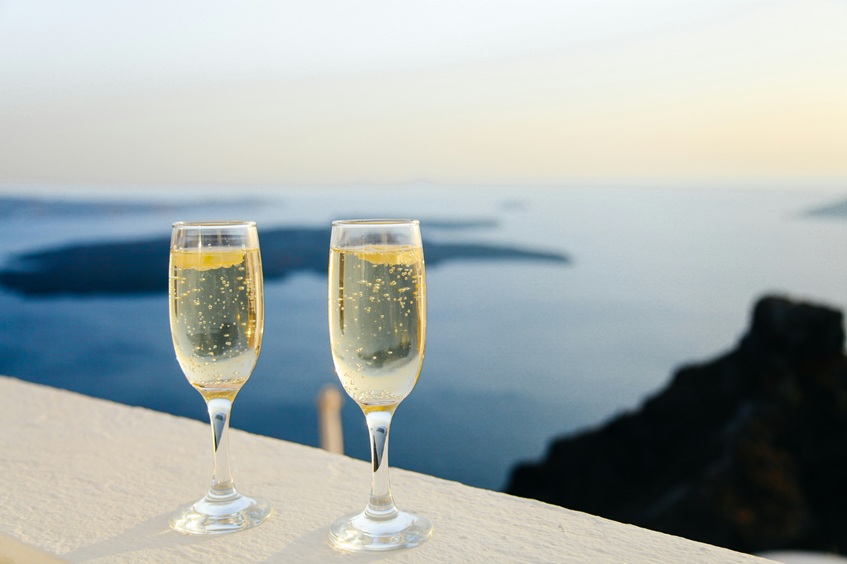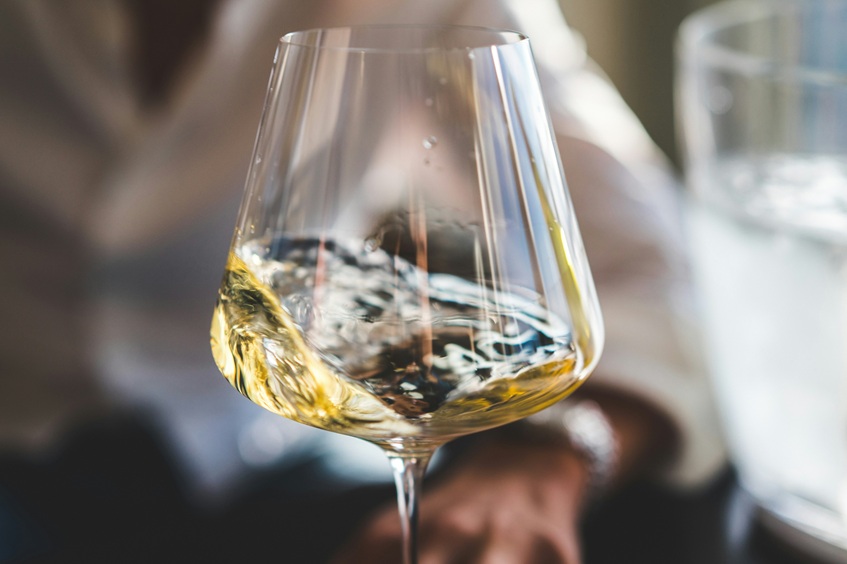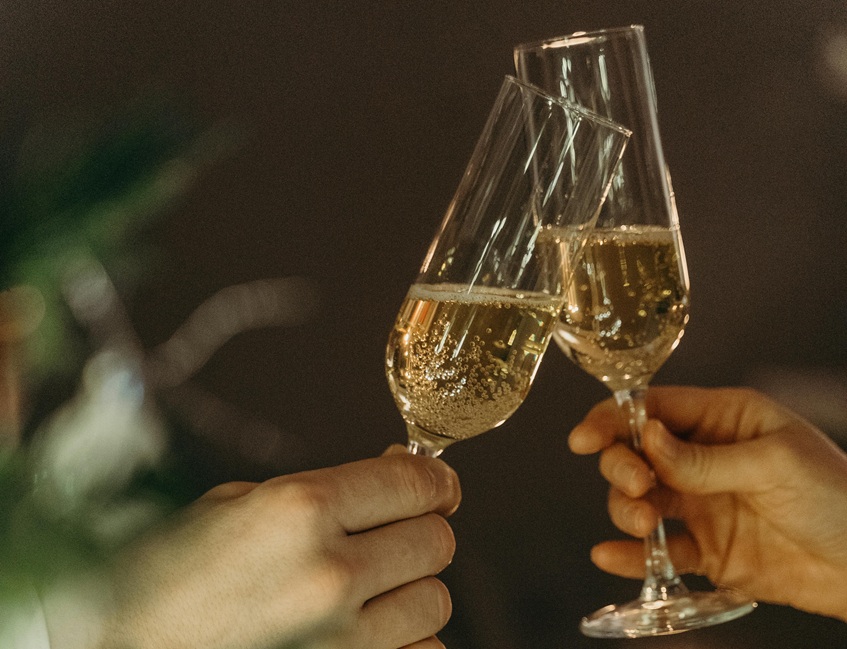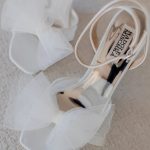There’s something about that joyful pop of a cork that instantly sets the mood. Whether it’s the clinking of flutes at a wedding, a toast to a new job, or simply winding down after a long day, bubbly wine has an undeniable charm. It’s the embodiment of celebration, elegance and joy, yet it shouldn’t only be reserved for special occasions. Once you understand how to choose, serve and pair it, you’ll discover that a bit of bubbly magic can make any moment sparkle.
What Is Sparkling Wine and How Is It Made?

At its simplest, sparkling wine is a wine that has delightful, fizzy bubbles that dance in your glass. But those tiny streams of sparkle aren’t just for show. They’re the result of carbon dioxide, naturally created during fermentation, being trapped inside the bottle.
There are a few different ways to create those bubbles, and the method used makes all the difference in the final taste and texture.
1. The Traditional Method
This is the gold standard of bubble-making and the method used to produce Champagne. The wine undergoes a secondary fermentation in the bottle, where yeast and sugar are added to create natural carbonation. The bottles are then aged on their lees (dead yeast cells), adding depth, complexity and those lovely brioche or toasty notes.
You’ll find this method used in Champagne (France), Cava (Spain) and some high-quality Australian wines, especially those from regions like Tasmania and the Adelaide Hills.
2. The Charmat (Tank) Method
Used primarily for Italian Prosecco, this process ferments the wine in large stainless steel tanks rather than individual bottles. The result is a lighter, fruitier style with aromas of pear, apple, and white flowers — fresh and fun, perfect for casual sipping or mixing in cocktails like a Bellini.
3. Other Methods
A few other techniques exist — such as carbonating still wine or the transfer method, which combines aspects of both processes. While less traditional, they offer budget-friendly ways to enjoy bubbles without compromising too much on flavour.
Types of Sparkling Wine Around the World
There’s a world of sparkling wines to explore, each with its own personality and story.
Champagne (France)
The original and most prestigious, champagne hails exclusively from the Champagne region in France. Made mostly from chardonnay, pinot noir and pinot meunier grapes, champagne sparkling wines are prized for the fine bubbles, balanced acidity and complex flavours. Expect notes of citrus, toast, almond and sometimes even hints of honey.
Prosecco (Italy)
The charmingly approachable cousin from Italy’s Veneto region. Made from the glera grape, prosecco is all about bright fruit flavours and floral aromas. It’s light, refreshing and ideal for brunches, parties, or whenever you fancy a glass of bubbly wine without breaking the bank.
Cava (Spain)
Cava uses the same traditional method as champagne but is generally more affordable. Made from native Spanish grapes such as macabeo and parellada, it’s crisp and citrusy, often with a slightly nutty edge.
Australian Wines
Australia has carved out an impressive reputation in the sparkling world. Tasmanian wines, in particular, are celebrated for their finesse and freshness, thanks to the island’s cool climate. South Australia and Victoria also produce exceptional examples, with some even rivalling top European labels.
Sweetness Levels Explained
If you’ve ever found yourself puzzled by terms like “Brut” or “Demi-Sec,” you’re not alone. These terms simply refer to the level of sweetness in the wine, and knowing them will help you pick the right bottle for your taste:
- Brut Nature/Extra Brut: Bone dry with little to no sugar. Crisp and refreshing.
- Brut: The most popular style; dry but balanced. Great with food.
- Extra Dry: Slightly sweeter than brut (confusing, we know!). Perfect for those who like a softer finish.
- Sec/Demi-Sec: Noticeably sweet; ideal for desserts or spicy dishes.
- Doux: Very sweet, almost dessert-like.
For most palates, brut is a safe and versatile choice. If you’re new to these wines, this is an excellent place to start.
How to Serve and Enjoy Sparkling Wine?

Serving sparkling wine properly is half the experience, and it’s not as intimidating as it seems. Keep it cool, but not icy. The ideal serving temperature is between 6°C and 10°C (43°F to 50°F). Too cold, and you’ll dull the flavours; too warm, and the bubbles will vanish faster than you expected.
While the traditional flute glass looks elegant and showcases the bubbles beautifully, it’s not always the best for aroma. A tulip-shaped glass, which narrows at the top, captures more of the wine’s bouquet, making it perfect for premium bottles.
When opening the bottle, remove the foil, loosen the wire cage and keep your thumb firmly on the cork, twisting the bottle slowly to let it ease out with a gentle hiss rather than a dramatic pop. Pour at an angle to preserve the fizz, filling each glass about two-thirds full to allow the aromas to develop.
Food Pairings with Sparkling Wine
One of the best things about sparkling wines is their versatility at the table. The bubbles and acidity act as a palate cleanser, cutting through richness and salt beautifully. Here are some food pairings you can try out:
- Champagne & Oysters: A timeless match. The saltiness of the oysters and the crispness of the champagne create pure harmony.
- Prosecco & Charcuterie: The light fruitiness of prosecco pairs wonderfully with cured meats, olives and soft cheeses.
- Cava & Tapas: Tapas dishes like calamari, croquettes or patatas bravas find their perfect partner in the lively acidity of cava.
- Rosé Sparkling Wine & Dessert: Strawberries and cream or a berry tart go beautifully with the subtle sweetness and fruit tones of rosé sparkling wine.
- Australian Sparkling Shiraz & Barbecue: A uniquely Aussie favourite! Its bold, fruity flavour and fizz complement smoky grilled meats to perfection.
Conclusion
From its intricate craftsmanship to its universal charm, sparkling wine is more than just a drink — it’s a celebration in a glass. Whether you prefer the crisp sophistication of champagne, the fruity playfulness of prosecco, or the refined character of an Australian vintage, there’s a bottle of bubbles out there for everyone.
Understanding how it’s made, what sweetness level suits your taste and how to serve it can turn any moment. So, the next time you’re browsing the shelves or scrolling through an online list, take a moment to explore. Pop that cork, pour a glass and toast to the simple joys in life.


